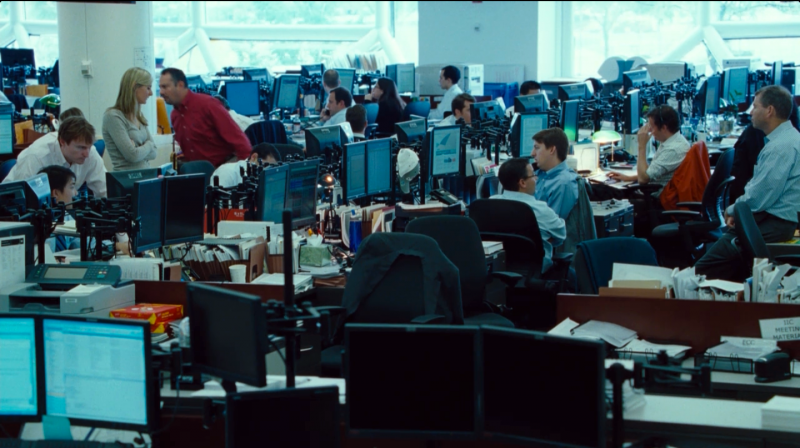It is hard to imagine today, but in the not so distant past, there was a lively debate regarding the usefulness of electronic trading in the corporate bond market.
Gradually, as key developments like the introduction of List RFQs by MarketAxess illustrated the potential market-wide benefits of electronic trading, the tectonic plates that upheld the traditional concept of corporate bond trading shifted.
Currently, electronic corporate bond trading has not only evolved to become an essential component for secondary trading, eTrading is considered by many to be the panacea for resolving the perceived corporate bond liquidity crisis.
The value proposition for corporate bond electronic trading has been most compelling for large, buy-side institutions. Therefore, it is no surprise thatincreasing eTrading adoption is a priority for many major asset managers. However, at the core of this strategy is a lingering question that grows more important with each year that electronic trading becomes more established.
What does it cost to trade corporate bonds electronically?
It is very surprising that as buy-side institutions laud corporate bond electronic trading, very few fixed income asset managers know the true details of their transaction costs. In other modernized markets like equities, asset managers must be intimately aware of transaction cost details for electronic trading for two crucial reasons:
Electronic transaction fees can have a material impact on fund performanceFinding the best possible price for electronic trading is a part of the "reasonable diligence" mandated by FINRA's best execution requirements.
For buy-side institutions to properly incorporate electronic trading into their long-term strategy for corporate bond trading, the current blind spot regarding the true costs of electronic trading must be resolved.
If you are someone who does not know what you paid to trade corporate bonds electronically in 2016, or worse, thinks that buy-side transaction fees don't exist, this is required reading.
More electronic trading volume, more problems
On today's most dominant corporate bond RFQ platform, the original cost model was simple. Dealers paid a subscription fee to have access to buy-side client inquiry, plus a per-trade transaction cost whenever their response to an RFQ resulted in a trade. Buy-side clients were only charged a very small subscription fee (normally waived if they performed a minimum volume of trades per month) and were charged nothing for sending and trading RFQs.

All was well in the early days, but as platform activity grew, a flaw in the pricing structure became obvious. The more corporate bond dealers embraced electronic trading by responding to, and winning, buy-side RFQs, the more it cost them. Something had to be done to share the RFQ cost burden between dealers and buy-side institutions or the momentum in electronic trading would have come to a halt.
It's so hard to say goodbye to yesterday
Creating a model that shifted some of the RFQ trading costs to the buy-side was no small feat. The first challenge was cultural. Under the previous cost structure, buy-side institutions were absolved of any material fees, so naturally, there was tremendous push back to the concept of a buy-side transaction fee. Some threatened to boycott the system, while others actively tried to move their trading activity to competitive platforms that were still free to the buy-side.
The second challenge was logistical. If an explicit buy-side transaction fee were to be charged on every electronic corporate bond trade, the executing asset manager would have to either absorb the cost as an operating expense, or allocate the transaction fee to the accounts they represent. It is common for a medium to large sized asset manager to represent 100s or even 1000s of sub accounts, which makes properly coordinating bond allocations a Herculean task. Adding more complexity to the account management process by including transaction cost allocations was (and remains) a non-starter for large buy-side institutions.
Ultimately, the solution that resolved the obstacles facing a buy-side corporate bond transaction fee is the current source opacity in today's market.
Hear No Transaction Costs, Speak No Transaction Costs, See No Transaction Costs
The solution was simple, but brilliant. Embed a transaction fee in the RFQ workflow, never make the cost visible to the buy-side client and collect the transaction fee from the dealer. Wait….what?
Let's use a crude example to illustrate the process:
Step 1
A buy-side client sends an RFQ bid-wanted request for $200,000 WMT 10 year bonds
Step 2
Dealer receives RFQ and provides a bid of $102.35
Step 3
Before delivering the dealer response back to the buy-side client, the platform adjusts the bid by reducing it from $102.35 to $102.25 (less $.10)
Step 4
Client receives $102.25 bid for their $200,000 WMT bonds and accepts
Step 5
The platform eventually invoices the dealer for the $.10 difference on the WMT trade, plus any other transaction fees collected through other trades.
If a trade occurs without a visible fee, was it free?
Under the then new and now current corporate bond RFQ pricing model, two very interesting paradoxical questions arise:
Is this "price adjustment" a transaction fee or not?Who is really paying, the dealer or buy-side client?
Before we answer the first question, lets first review the definition for transaction fee:
"A charge an intermediary, such as a broker-dealer or bank, assesses for assisting in the sale or purchase of a security"
In the example provided, the platform assisted in the sale of the WMT bonds. As compensation for this service, the bid for the buy-side client's bonds is adjusted lower than the intended bid of $102.35, with the platform realizing the difference between the intended bid and traded bid ($102.35 - 102.25 = $.10 paid to the platform). This is most definitely a transaction fee. The buy-side not seeing the cost doesn't change that.
As for the second question, the dealers theoretically "collect" the basis between the intended price and traded price for each trade, and then pay that difference directly to the platform, making it difficult to determine who bears the cost to trade RFQs.
Some dealers feel that this model maintains a dealer transaction fee to trade individual corporate bond RFQs. This feeling is further reinforced when a dealer writes a check for real money to "transfer" the collected fees back to the platform. In reality, without the price adjustment being made by the platform, a dealer would have traded the bonds at their initial bid or offer. If you removed the platform from the trading workflow, the dealers would never know that there was an opportunity to trade at a better price, so dealers are not paying under this model.
From the perspective of the buy-side, the price adjustment inhibits their ability to trade against a more favorable price. This means the buy-side institution and all the clients they represent ARE paying to trade corporate bond RFQs, even if they don't sign a check against a physical invoice.
Same as it ever was
A remarkable fact about the past 10 years of electronic RFQ trading in the corporate bond market is that despite innovative accomplishments and growth in adoption, the pricing model has remained the same. In other words, there has been no adjustment in the intermediation costs for electronic trading even though buy-side institutions and regulators are consistentlyfocused on the state of bid/ask spreads(aka: transaction costs).
Proponents of corporate bond electronic trading will tell you that there is "growing evidence of the cost savings that can be achieved on electronic platforms may also be helping to align buy-side liquidity provision with Finra best execution requirements".
This is based on a theory that simply building a network through electronic trading and expanding the network through broader adoption and open protocols realizes the best possible price. To a point, yes, having more participants responding to an RFQ can help improve pricing, but there is a saturation point where the cost benefit of more participants is de minimis when compared to a material reduction in the platform transaction fees.

To illustrate the saturation point, a buy-side institution can check the number of dealers that comprised 90% of their transaction volume on the dominant RFQ platform for 2016. If the number of dealers was <25, does it really matter if there are +80 dealers available to you on the system? There simply comes a point where adding more of a good thing doesn't make much of an improvement on the overall offering.
With great use of e-trading comes great responsibility
As financial markets evolve digitally, the most successful buy-side institutions have consistently leveraged electronic trading to improve their execution process and overall business performance. Success was not achieved through a blind devotion to everything electronic, but rather a meticulous and strategic approach to consistently source the most appropriate electronic trading venues based on cost and execution quality.
Based on years of incremental growth in adoption, electronic trading in the corporate bond market is poised to offer the buy-side the same benefits they enjoy in modernized financial markets. The gradual development of multiple platforms makes realizing these benefits more complex than just committing order flow to a single system.
To fully leverage electronic trading, buy-side institutions must understand the true cost of trading and have a strategy for reducing their short term and long term electronic transaction costs. This knowledge and planning is not a "nice-to-have" because of the potential to significantly improve buy-side trading performance, it is also a requirement for any institution that has a fiduciary responsibility to get the best possible price for their clients.
The path towards achieving best-execution in corporate bond electronic trading starts with expanding the criteria for evaluating platforms. Strictly measuring the soundness of a platform based on the number of dealers and average daily volume is woefully incomplete. Platform transaction fees, actively traded CUSIPS and quality of dealer participants are just a few of the areas that need to be included in the evaluation process. If done properly, any buy-side institution will be able to avoid significant waste and optimize their performance by finding the most appropriate electronic trading environment for their order flow.
Chris White is the founder and CEO of ViableMkts, which helps banks, buy side institutions and vendors innovate by providing best in class strategic guidance, business management and product development services. In addition to leading the ViableMkts team, Chris publishes a weekly newsletter covering bond market development, Friday Newsletter.

